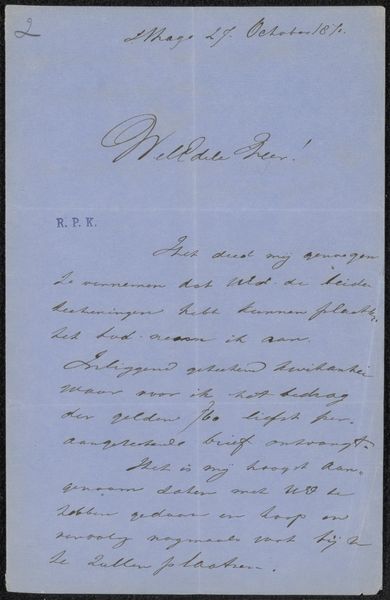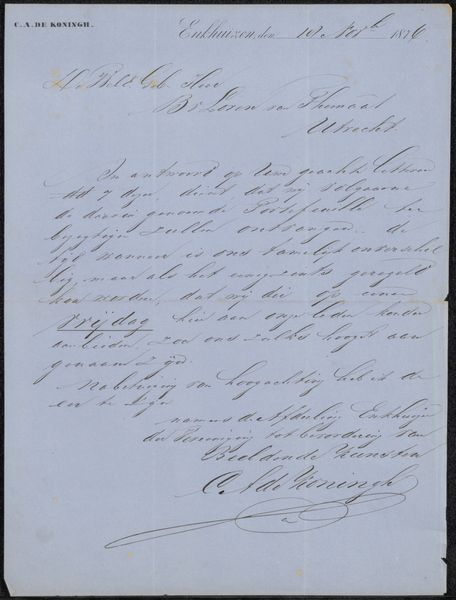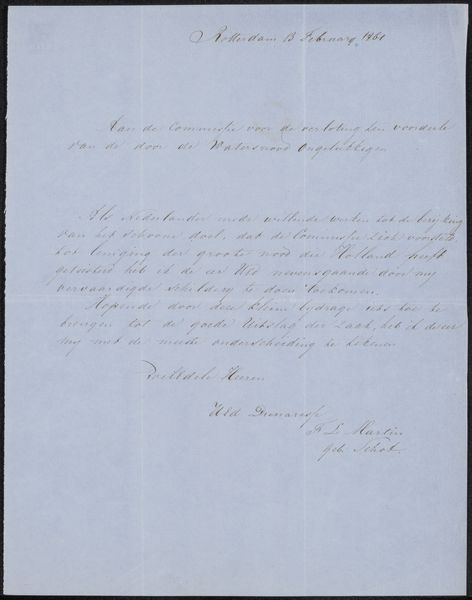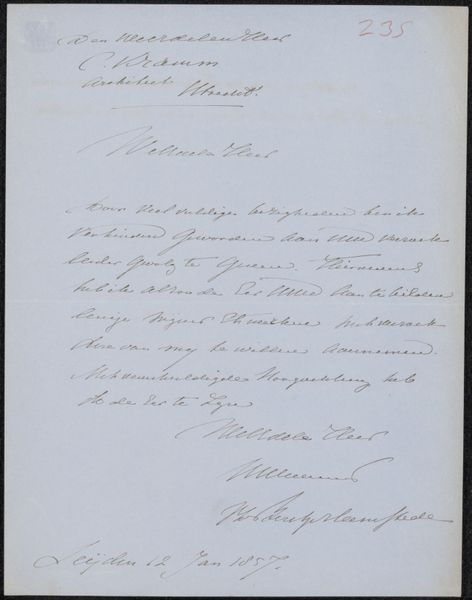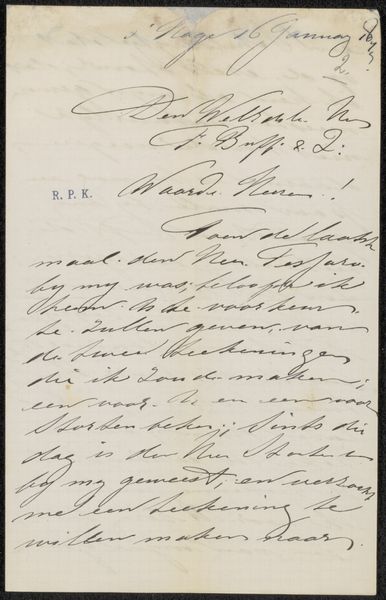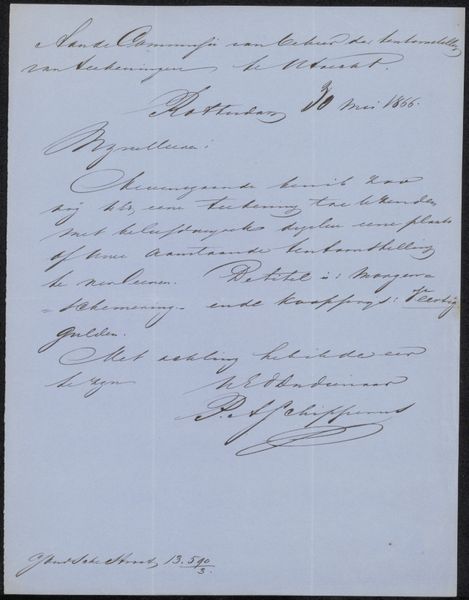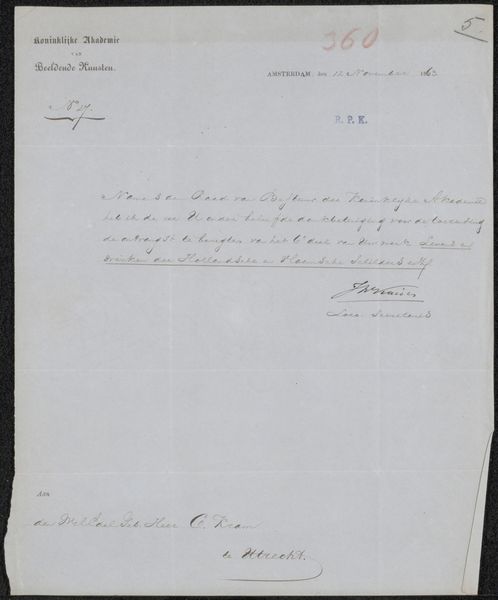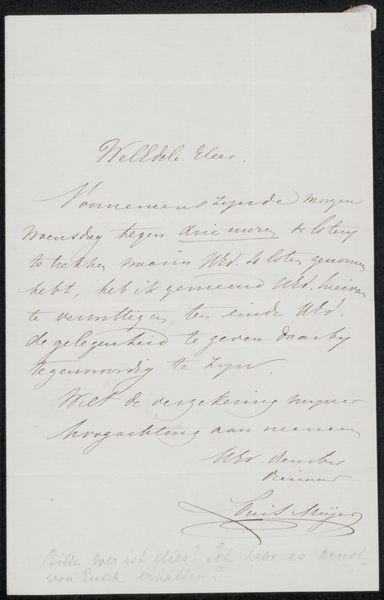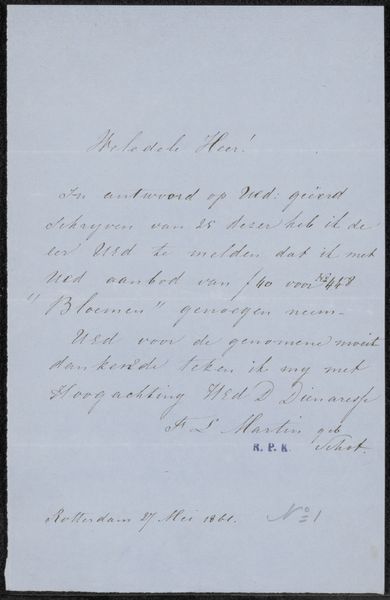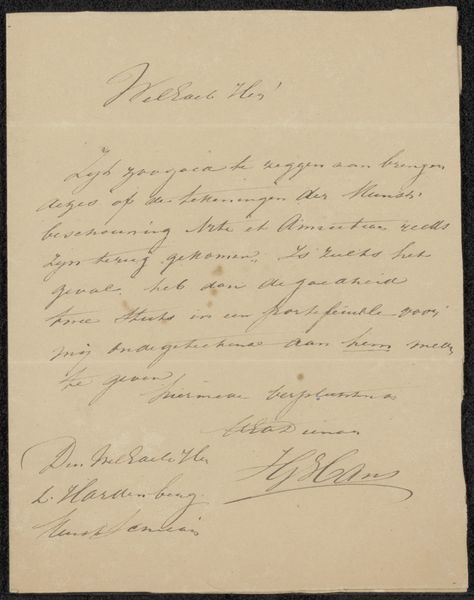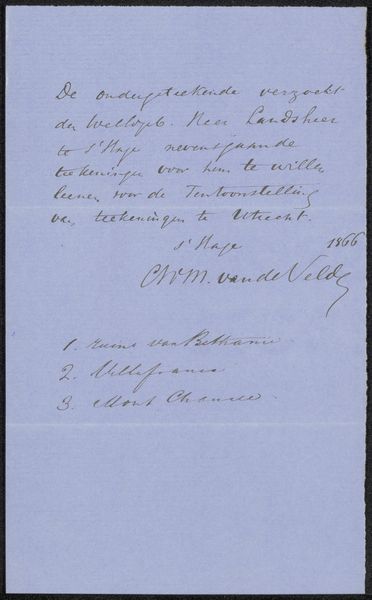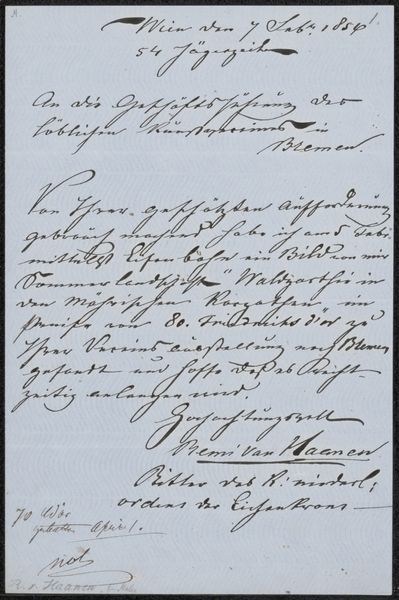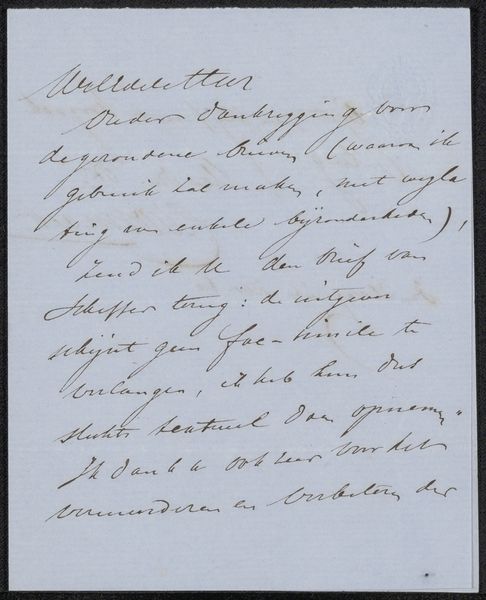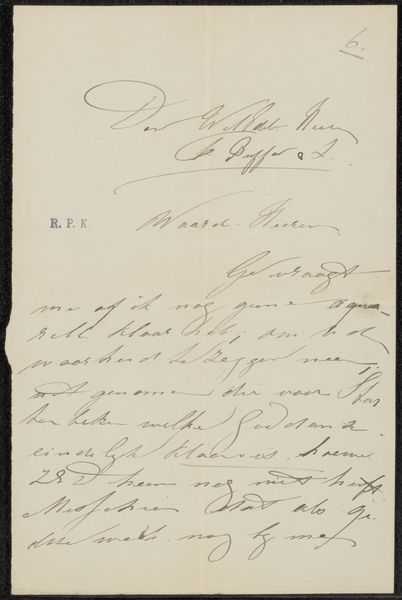
drawing, ink
#
drawing
#
hand-lettering
#
incomplete sketchy
#
hand drawn type
#
personal sketchbook
#
ink
#
hand-drawn typeface
#
hand drawn
#
fading type
#
ink colored
#
sketchbook drawing
#
sketchbook art
#
calligraphy
Copyright: Rijks Museum: Open Domain
Curator: We're looking at "Brief aan de heer Camarelli," or "Letter to Mr. Camarelli," by Louis Apol. This ink drawing, likely from 1871, is part of the Rijksmuseum collection. Editor: It’s strikingly intimate. Seeing this handwritten correspondence, the fading ink... It feels very personal, like a peek into someone’s private world. Almost fragile, wouldn’t you say? Curator: Absolutely. As a sketch, likely extracted from his personal sketchbook, the work offers a candid look into 19th-century artistic circles and practices. Apol's social standing undoubtedly afforded him the leisure and connections for such correspondence, setting him apart within Dutch society. Editor: Do you think the careful hand-lettering was intended as a form of performative class identity, showing the artist as part of this social fabric, but also performing the artistry even in these minor exchanges? Or even, for instance, thinking about who "Herr Camarelli" was, and how the performance here is also related to questions of masculinity in that era. Curator: I think the precise lettering definitely indicates a certain level of formality, which would be interesting to compare to more candid letters, like Van Gogh's which take on an aesthetic character all their own. In our image, this aesthetic speaks to both decorum and education. The visible corrections also imply the inherent pressures on male artists—then and now—for public visibility through any means necessary. Editor: The almost vanishing letters speak to a broader social ill as well, if you think about documentation, censorship, loss…The letter seems almost spectral now, like a message trying to break through the fog of time. Curator: I agree; though documentation can preserve, the decay of the written record speaks volumes about how institutional amnesia can erase histories and voices. In art historical accounts, this speaks, specifically, to class divides and the accessibility, or inaccessibility, of archives to more everyday citizens. Editor: So much hidden in plain sight. Apol's little letter whispers volumes! Curator: Indeed, a reminder to consider the role of archives, private and public, in both reflecting and shaping our historical understanding.
Comments
No comments
Be the first to comment and join the conversation on the ultimate creative platform.
